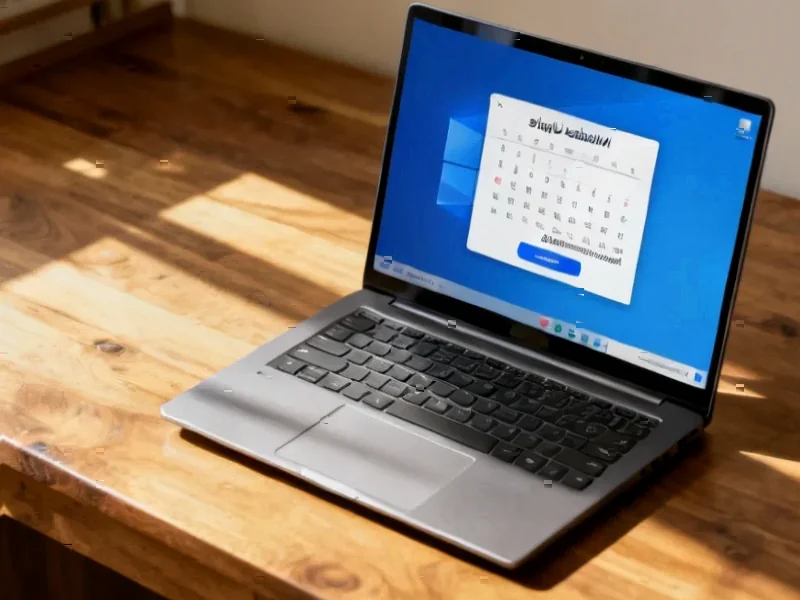According to PCWorld, Windows updates have become a significant source of user frustration, particularly when large updates arrive at inconvenient times. While acknowledging that updates remain essential for security and performance—especially given the approaching end of Windows 10 support—the publication emphasizes that users can take proactive control through various settings and scheduling options. The article positions Windows updates as a necessary evil that users can manage effectively with the right approach, highlighting the balance between security requirements and user convenience. This tension between forced updates and user control reveals deeper market dynamics.
The Update Strategy as Competitive Differentiator
Microsoft’s aggressive update approach creates a strategic opening for competitors in the enterprise and consumer markets. Companies like Apple have capitalized on this by emphasizing their more user-friendly update processes, where macOS updates typically require explicit user approval and can be scheduled more flexibly. In the enterprise space, Linux distributions and Chrome OS have gained traction partly because of their less disruptive update mechanisms. The Windows update approach essentially forces users to accept Microsoft’s timing, creating friction that competitors can exploit.
Enterprise Software Management Shifts
For IT departments, the Windows update challenge has accelerated the shift toward centralized management solutions and alternative platforms. The rise of Windows 11’s more aggressive update requirements has pushed enterprises toward solutions like Windows Update for Business and third-party patch management tools. This creates a secondary market for update management software and services, with companies like ManageEngine, Ivanti, and PDQ Deploy building substantial businesses around managing Microsoft’s update ecosystem. The economic impact extends beyond Microsoft to an entire ecosystem of management tools and consulting services.
Security Industry Consequences
The forced update model has significant implications for the cybersecurity market. While Microsoft’s approach theoretically reduces vulnerability exposure, it also creates opportunities for security vendors who can provide additional layers of protection during the update process. The period between update availability and installation represents a critical vulnerability window that security companies can address. Additionally, the Windows 10 end-of-support deadline in October 2025 creates a massive upgrade cycle that will benefit hardware manufacturers, security software providers, and IT services firms.
Changing User Expectations and Behavior
The Windows update experience is fundamentally reshaping how users interact with their devices and what they expect from software providers. The frustration with forced updates has contributed to the growth of “set it and forget it” computing models, including Chromebooks in education and cloud-based virtual desktops in enterprise. Users are increasingly willing to sacrifice some customization for reliability and minimal maintenance. This shift represents a long-term threat to Microsoft’s traditional desktop dominance as computing becomes more platform-agnostic and users prioritize seamless experiences over feature depth.
Future Market Directions
Looking ahead, Microsoft’s update strategy will likely continue evolving in response to competitive pressure and user feedback. The company faces a delicate balancing act between security imperatives and user autonomy. As Windows 11 adoption grows, we may see more granular control options emerge, particularly for enterprise users. However, the fundamental tension will remain: Microsoft’s business model depends on maintaining a standardized, secure platform, while users increasingly demand personalized computing experiences. How Microsoft navigates this challenge will significantly impact its competitive position across consumer, education, and enterprise markets.




